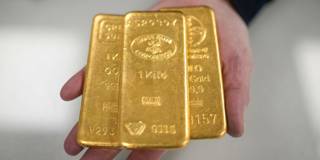A recent surge in the gold price is symptomatic of a changing world order and the onset of a new age of conflict and uncertainty. Governments and central banks have long viewed the precious metal as a potential source of monetary stability and economic security, and this time is no exception.
PRINCETON – Gold has returned to the international monetary system. Over 50 years ago, US President Richard Nixon “closed the gold window” (ended the dollar’s fixed-rate convertibility into gold), and the world moved on from its obsession with precious metals. A new era of fiat currency had begun. But now, fiat money is being challenged by fiscal worries and new technology (blockchains/distributed ledgers), and the price of gold has reached all-time highs above $2,400 per ounce.

PRINCETON – Gold has returned to the international monetary system. Over 50 years ago, US President Richard Nixon “closed the gold window” (ended the dollar’s fixed-rate convertibility into gold), and the world moved on from its obsession with precious metals. A new era of fiat currency had begun. But now, fiat money is being challenged by fiscal worries and new technology (blockchains/distributed ledgers), and the price of gold has reached all-time highs above $2,400 per ounce.